
The ASME B31.3 Process Piping Design Code Training offers comprehensive instruction on the principles, calculations, and safety requirements for designing and constructing process piping systems. It covers materials selection, stress analysis, flexibility, welding, fabrication, and pressure testing in compliance with ASME standards. Participants gain hands-on understanding of design parameters, inspection procedures, and documentation practices. Designed for engineers, designers, and QA/QC professionals, this training builds expertise to ensure reliable, efficient, and code-compliant piping systems for complex industrial environments.
ASME B31.3 Process Piping Design Code Training Interview Questions Answers - For Intermediate
1. What is the scope of ASME B31.3 compared to other ASME piping codes?
ASME B31.3 applies specifically to process piping used in chemical, petroleum, and related industries, typically within facilities where fluids are processed, manufactured, or handled. Unlike ASME B31.1, which governs power piping in power plants and heating systems, or ASME B31.8, which covers gas transmission and distribution, B31.3 focuses on complex process environments where temperature, pressure, and corrosive fluids vary significantly, demanding stricter design and safety considerations.
2. What is meant by design life in process piping systems?
Design life refers to the expected service period during which a piping system can safely operate under specified conditions without failure. It depends on factors such as corrosion rate, material fatigue, operating temperature, and pressure cycles. ASME B31.3 ensures that the piping is designed with adequate allowances and safety margins to meet or exceed its intended operational lifespan while minimizing maintenance risks.
3. What are the main design loads considered under ASME B31.3?
ASME B31.3 requires designers to account for internal pressure, weight of pipe and contents, thermal expansion, wind, seismic forces, and occasional loads like surge or water hammer. Each load case is analyzed individually and in combination to ensure the piping system remains within allowable stress limits and avoids overstressing, vibration, or displacement.
4. What is meant by “occasional loads,” and how are they treated in the code?
Occasional loads refer to infrequent stresses such as seismic activity, wind pressure, relief valve discharge, or transient fluid hammer effects. ASME B31.3 allows these loads to exceed normal allowable stresses by a limited percentage for a short duration. However, the piping layout and supports must be designed to resist these loads without permanent deformation or failure.
5. How is flexibility in a piping system achieved?
Flexibility is achieved by incorporating bends, loops, offsets, and expansion joints that allow the system to absorb thermal movements and vibrations. ASME B31.3 requires a flexibility analysis to ensure the stresses due to expansion or contraction remain below code limits. Proper flexibility prevents excessive forces on nozzles, supports, and welded joints, extending the system’s operational reliability.
6. What are the responsibilities of the piping designer under ASME B31.3?
The piping designer is responsible for ensuring that all aspects of the design — including material selection, wall thickness, flexibility, support, and layout — comply with ASME B31.3. The designer must also verify that the system can withstand all anticipated operating conditions, coordinate with other disciplines, and prepare design documentation for inspection and testing.
7. What are the types of joints permitted in process piping?
ASME B31.3 permits welded, threaded, flanged, and mechanical joints, depending on pressure class, fluid service, and operating conditions. Welded joints are preferred for high-pressure and high-temperature services, while flanged and threaded joints are typically used for ease of maintenance and assembly. The choice of joint type must align with fluid category and safety considerations.
8. What is the role of the owner in ensuring code compliance?
The owner holds ultimate responsibility for defining the design conditions, fluid service classification, and required testing standards. ASME B31.3 assigns the owner the authority to accept design deviations, specify inspection levels, and approve materials or designs that meet or exceed code intent. Proper owner oversight ensures that design and construction align with both safety and regulatory expectations.
9. How are fittings and flanges categorized under ASME B31.3?
Fittings and flanges are categorized based on pressure class ratings, material, and temperature capabilities. The code references ASME B16 standards, such as B16.5 for flanges and B16.9 for butt-weld fittings. Each component must match the pressure-temperature rating of the connected piping to ensure uniform strength and leak-tight connections throughout the system.
10. How does ASME B31.3 handle stress intensification factors (SIFs)?
Stress Intensification Factors (SIFs) account for localized stress increases due to geometric discontinuities like elbows, tees, and reducers. ASME B31.3 provides standard SIF values for common fittings and allows finite element analysis for non-standard configurations. Considering SIFs ensures accurate stress evaluation during flexibility analysis, preventing fatigue failure at high-stress concentration points.
11. What is the difference between primary and secondary stresses in piping?
Primary stresses are those required to maintain equilibrium under sustained loads like pressure and weight, and exceeding their limit may cause failure. Secondary stresses result from displacement, thermal expansion, or misalignment and are self-limiting. ASME B31.3 differentiates between the two because primary stress violations lead to collapse, while secondary stresses lead to fatigue or distortion over time.
12. What is meant by cold spring in piping design?
Cold spring is the intentional deformation of a piping system during installation to counteract thermal expansion or contraction during operation. By introducing a controlled pre-stress, designers can balance thermal movements and reduce overall system stress. ASME B31.3 allows the use of cold spring but limits it to ensure predictable behavior and requires documentation for inspection.
13. How does ASME B31.3 address vibration in piping systems?
ASME B31.3 requires that vibration from pumps, compressors, and flow-induced sources be minimized through proper design and support placement. The code emphasizes avoiding resonance, ensuring dynamic loads are within acceptable limits, and verifying that connections are not overstressed. Excessive vibration can cause fatigue cracking or loosening of joints, making vibration control a critical safety factor.
14. What are the testing exemptions provided in ASME B31.3?
Certain piping systems, such as those in Category D fluid service or low-pressure applications, may be exempt from hydrostatic testing if alternative non-destructive examinations (NDE) are performed. The code allows pneumatic testing or visual and volumetric inspection when justified by design and approved by the owner. These exemptions aim to maintain safety without unnecessary testing risks.
15. What are the key documentation and record-keeping requirements after testing?
After successful testing and inspection, ASME B31.3 requires the preparation of test certificates, inspection reports, and as-built drawings. These records must document test pressures, durations, examiner qualifications, and any non-conformities found. Maintaining complete documentation ensures traceability, regulatory compliance, and future reference during maintenance or plant modification activities.
ASME B31.3 Process Piping Design Code Training Interview Questions Answers - For Advanced
1. How does ASME B31.3 address the concept of “Design for Maintainability” in process piping systems?
ASME B31.3 indirectly supports Design for Maintainability (DFM) through its emphasis on accessibility, inspection, and operability provisions. While the code primarily focuses on safety and integrity, it mandates that piping systems be designed with adequate clearances for inspection, cleaning, testing, and repair (Para. 300.2). Designers must ensure accessibility for NDE examinations, valve operation, and corrosion monitoring without system disassembly. The arrangement of piping, supports, and components must also minimize interference with maintenance tools and ensure safe working space under operating conditions. In high-risk or Category M services, isolation and drain provisions are required for safe maintenance. By adhering to DFM principles within ASME B31.3’s safety framework, plants achieve longer uptime, reduced maintenance cost, and safer personnel interaction with the system.
2. What role does the Owner play in defining design conditions under ASME B31.3?
Under ASME B31.3, the Owner bears the ultimate responsibility for establishing the design conditions, including design pressure, temperature, fluid category, and service class. Paragraph 300.2.2 clearly assigns the Owner or their designee (such as the Design Engineer) to determine the most severe coincident conditions for design. The Owner must ensure that all potential operational scenarios — such as startup, shutdown, upsets, or relief discharges — are considered. Furthermore, the Owner defines whether a system falls under Category D, M, or High-Pressure Fluid Service, impacting material, examination, and testing requirements. This delegation of authority ensures that responsibility for risk acceptance and operational safety remains clearly defined, promoting accountability across the design and construction chain.
3. How are branch connections evaluated for reinforcement under ASME B31.3?
ASME B31.3 requires that branch connections be designed to prevent overstress at the run-branch junction, where stress intensification is highest. Paragraph 304.3 outlines the pressure design of branch connections, requiring that the area available for reinforcement equals or exceeds the area removed due to the opening. Reinforcement can be achieved through excess wall thickness in the run or branch, or by adding a reinforcing pad or saddle. The effective reinforcement area must extend both above and below the branch opening within specified limits (per Fig. 304.3.3). Additional checks include fatigue resistance, weld quality, and alignment. For complex geometries, finite element analysis or WRC 107/297 methods are used to verify stress compliance. This ensures that localized stress concentrations do not exceed code limits, preventing cracking and fatigue failure at critical points.
4. What are the key considerations for high-temperature piping design under ASME B31.3?
High-temperature piping introduces challenges such as creep, stress relaxation, and oxidation, which affect material integrity and dimensional stability. ASME B31.3 addresses these through temperature-dependent allowable stresses, mandatory creep strength evaluation, and additional requirements for post-weld heat treatment (PWHT). For materials above their creep threshold (e.g., >427°C for carbon steel), the designer must consider time-dependent deformation using creep rupture data. Expansion loops and bellows are employed to control thermal growth, while corrosion-resistant alloys like P91 or Inconel may be selected for long-term exposure. Supports must also allow free movement and avoid high restraint. The code ensures that both short-term loads and long-term creep effects are considered, ensuring dimensional stability and operational reliability over extended service periods.
5. How are piping supports classified and designed per ASME B31.3 guidelines?
Piping supports are classified into primary (load-bearing) and secondary (guides, anchors, snubbers), each serving structural and dynamic control functions. ASME B31.3 mandates that supports be designed to sustain weight, pressure, and displacement loads while allowing for expansion and vibration control. Supports must prevent sagging, resonance, or overstressing at connected equipment nozzles. Designers often follow MSS SP-58 and SP-69 standards for detailed configuration. The code emphasizes thermal flexibility and restricts rigid restraint where it could induce excessive reaction forces. Advanced designs employ spring hangers or hydraulic snubbers to manage transient events. Properly engineered supports ensure that the piping remains within allowable stress limits, preventing fatigue failures and alignment issues over the life of the system.
6. Explain how ASME B31.3 treats combined loads in piping design.
Combined loads—pressure, weight, thermal, and dynamic—must be evaluated collectively to ensure overall stress remains below allowable limits. ASME B31.3 specifies that the total stress at any point be assessed as the vector sum of sustained, displacement, and occasional stresses. Sustained stresses are checked against yield criteria, displacement stresses are analyzed for fatigue potential, and occasional stresses (like wind or seismic) are allowed limited exceedance. The code defines allowable stress ranges and combination factors in Equations (1) through (3), accounting for nonlinear interactions. In modern practice, finite element analysis (FEA) software such as CAESAR II automates these combinations, modeling nonlinear boundary conditions and dynamic interactions to ensure compliance with the code’s combined loading philosophy.
7. What is the concept of “leak-before-break” and how is it relevant to ASME B31.3?
The leak-before-break (LBB) concept assumes that a piping component will develop a detectable leak before catastrophic rupture, allowing corrective action before failure. While ASME B31.3 does not directly reference LBB as a design method, it inherently supports the philosophy through ductile material requirements, inspection standards, and pressure testing. By mandating materials with adequate toughness and defining hydrostatic test margins (1.5 × design pressure), the code ensures systems exhibit leak indications before brittle fracture. LBB assessments are often performed as part of Fitness-for-Service evaluations per API 579 or ASME FFS-1, especially in high-pressure or critical-service piping. Integrating LBB with B31.3 compliance strengthens the overall safety envelope of process facilities.
8. How does ASME B31.3 define the requirements for pressure relief and overpressure protection?
ASME B31.3 mandates that piping systems be protected from overpressure through pressure-relieving devices (PRDs) such as safety valves, rupture disks, or expansion tanks. Paragraph 301.2.2 specifies that systems must be designed so that no component is subjected to pressures beyond 110% of its design limit during relief events. Relief valve sizing follows API 520/521 or equivalent standards, and discharge piping must be designed to handle backpressure and dynamic loads without exceeding stress limits. The code also requires that relief paths be routed to safe locations, considering reaction forces and acoustic vibration. Effective overpressure protection ensures the system can withstand abnormal conditions like blocked discharge, fire exposure, or pump deadheading without structural failure.
9. How is cyclic loading and fatigue assessment performed in process piping systems?
ASME B31.3 addresses cyclic loading through its stress range reduction factor (f), which adjusts allowable stress based on the expected number of operating cycles. For systems experiencing significant temperature swings or pressure fluctuations, engineers perform fatigue analysis to ensure stresses remain within endurance limits. The code provides simplified methods for low-cycle fatigue but allows detailed assessment using S-N curves from ASME Section VIII, Div. 2 for critical cases. Additionally, weld geometry, surface finish, and SIFs are incorporated into the fatigue evaluation. In high-cycle services (e.g., compressor discharge lines), vibration monitoring and frequency analysis are integrated to avoid resonance. This holistic approach minimizes fatigue-induced cracking and extends the piping system’s operational lifespan.
10. What is the importance of non-destructive examination (NDE) in ASME B31.3 compliance?
NDE ensures that fabrication and welding meet design integrity without requiring destructive testing. ASME B31.3 specifies examination levels based on fluid category, material, and service criticality. Methods include visual (VT), radiographic (RT), ultrasonic (UT), magnetic particle (MT), and liquid penetrant (PT) inspections. The extent of examination can range from random sampling to 100% coverage for toxic or high-pressure systems. The code defines acceptable defect criteria (per Table 341.3.2) and mandates rework for nonconforming welds. NDE documentation must include examiner qualifications and calibration records. By verifying hidden discontinuities, NDE enhances reliability and ensures the piping’s mechanical integrity before commissioning, reducing risk of leaks or catastrophic failures.
11. How does ASME B31.3 address piping systems operating in cyclic temperature environments?
In cyclic temperature environments, the repeated expansion and contraction can cause fatigue and loosening of connections. ASME B31.3 mitigates this through flexibility analysis and the stress range reduction factor (f), accounting for the number of expected thermal cycles. Designers must ensure that the expansion stress range does not exceed the allowable limit defined by Equation (1a). The code further recommends using expansion loops, flexible couplings, and sliding supports to accommodate movement. For extreme cycling, materials with high ductility and low notch sensitivity are preferred. The overall objective is to ensure the system’s endurance under repeated thermal fluctuations without compromising structural or functional reliability.
12. How does ASME B31.3 handle design for vacuum or external pressure conditions?
While ASME B31.3 primarily focuses on internal pressure, it also addresses external pressure (vacuum) conditions to prevent buckling or collapse. The code references ASME BPVC Section VIII, Div. 1, UG-28 for the design of cylindrical shells under external pressure. The piping must be checked for critical buckling pressure based on geometry, wall thickness, and modulus of elasticity. For long, thin-walled pipes, stiffening rings or shorter unsupported spans may be required. Vacuum design becomes especially critical in condensate, flare, or vent systems. Proper analysis ensures that the system maintains shape stability and avoids catastrophic implosion during vacuum conditions or transient shutdowns.
13. What are the testing and inspection requirements for Category M Fluid Service?
Category M Fluid Service involves extremely toxic or lethal fluids, demanding enhanced testing and inspection rigor. ASME B31.3 Para. 300.2 defines Category M as any fluid where exposure, even in small amounts, could cause death or serious injury. Therefore, 100% radiographic or ultrasonic examination is mandatory for all circumferential welds. Hydrostatic testing is required at 1.5 times the design pressure, and pneumatic testing is only permitted with additional safeguards. Furthermore, leakage testing using halogen leak detectors or helium mass spectrometers may be conducted for added assurance. All materials and welders must be fully traceable, and inspection documentation is retained for the life of the facility to ensure accountability and regulatory compliance.
14. What are the engineering implications of thermal bowing in long process lines?
Thermal bowing occurs when temperature gradients across a pipe’s cross-section cause uneven expansion, leading to bending or deflection. ASME B31.3 requires designers to account for displacement-induced stresses from such conditions as part of flexibility analysis. Thermal bowing can arise in partially filled lines, uneven insulation, or lines exposed to direct sunlight. If not properly managed, it can cause misalignment, nozzle overload, or fatigue cracking. Solutions include uniform insulation, expansion loops, and strategic support placement. In high-temperature or cryogenic systems, designers often perform nonlinear thermal analysis to predict bowing behavior. Managing thermal bowing ensures geometric stability and mitigates unanticipated stress accumulation.
15. How does ASME B31.3 integrate with other industry codes and standards?
ASME B31.3 is not an isolated standard; it harmonizes with numerous other codes to ensure full system integrity. It references ASME Section II for material properties, Section IX for welding qualifications, ASME B16 for flanges and fittings, and API and ASTM standards for testing and fabrication. For high-pressure systems, Appendix K aligns with ASME Section VIII, Div. 2. Integration ensures consistent criteria for design, fabrication, and testing across disciplines such as pressure vessels, heat exchangers, and rotating equipment. This interconnected framework promotes global uniformity in safety and quality practices, allowing multi-code systems to operate seamlessly within regulated industries like oil, gas, and chemical processing.
Course Schedule
| Dec, 2025 | Weekdays | Mon-Fri | Enquire Now |
| Weekend | Sat-Sun | Enquire Now | |
| Jan, 2026 | Weekdays | Mon-Fri | Enquire Now |
| Weekend | Sat-Sun | Enquire Now |
Related Courses
Related Articles
Related Interview
Related FAQ's
- Instructor-led Live Online Interactive Training
- Project Based Customized Learning
- Fast Track Training Program
- Self-paced learning
- In one-on-one training, you have the flexibility to choose the days, timings, and duration according to your preferences.
- We create a personalized training calendar based on your chosen schedule.
- Complete Live Online Interactive Training of the Course
- After Training Recorded Videos
- Session-wise Learning Material and notes for lifetime
- Practical & Assignments exercises
- Global Course Completion Certificate
- 24x7 after Training Support

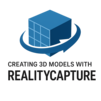
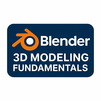


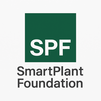

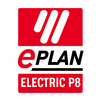

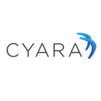
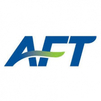
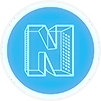


 Join our Live Instructor-Led online classes delivered by industry experts
Join our Live Instructor-Led online classes delivered by industry experts